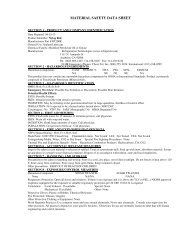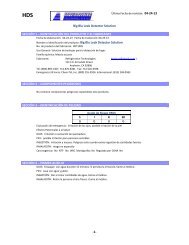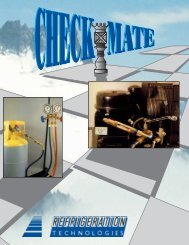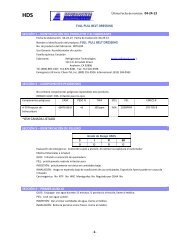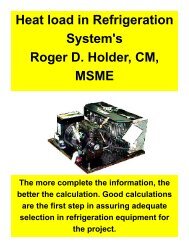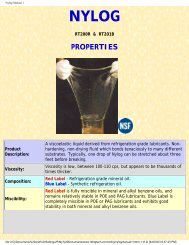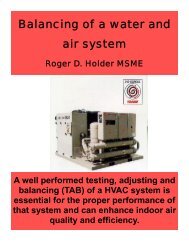Refrigeration Piping Charging Residential AirConditioning R
Refrigeration Piping Charging Residential AirConditioning R
Refrigeration Piping Charging Residential AirConditioning R
Create successful ePaper yourself
Turn your PDF publications into a flip-book with our unique Google optimized e-Paper software.
15<br />
Vibration & Noise in <strong>Piping</strong><br />
Two undesirable effects of vibration of refrigerant piping are: 1) physical damage to<br />
the piping, which may result in the breaking of brazed joints and consequent loss of<br />
charge; and 2) transmission of noise through the piping itself and through building<br />
construction with which the piping may come into direct physical contact. Both can be<br />
eliminated or minimized by proper piping design and installation.<br />
Using Manufacturer’s Pressure Drop & Velocity Charts<br />
Always size for pressure drop first, then velocity. On the top right of the pressure drop<br />
chart in Figure 8-3, you will find tons of refrigeration or cooling capacity calibrated in<br />
Btu per hour up to 1 ton, and in tons of cooling from 1 ton to 100 tons. You start the<br />
sizing procedure by drawing a straight line from your system’s designated capacity<br />
through the diagonal lines on the right side of the chart.<br />
The diagonal lines represent:<br />
• The “evaporator temperature”, used to size the suction line.<br />
• The “discharge line” temperature, used to size the hot gas discharge.<br />
• The “liquid lines” diagonal line, used to size the liquid line.<br />
15




